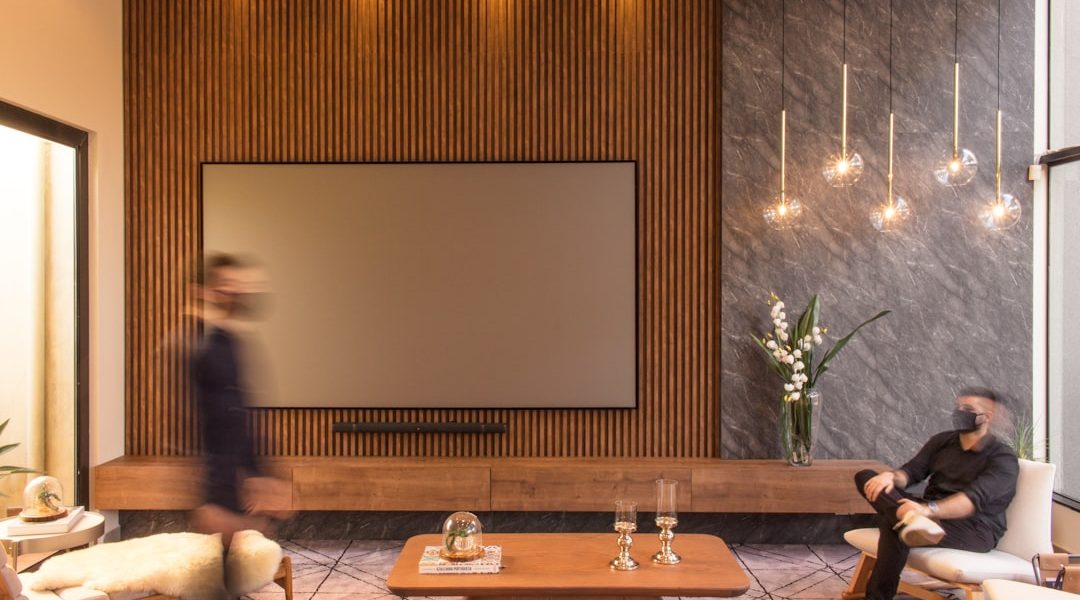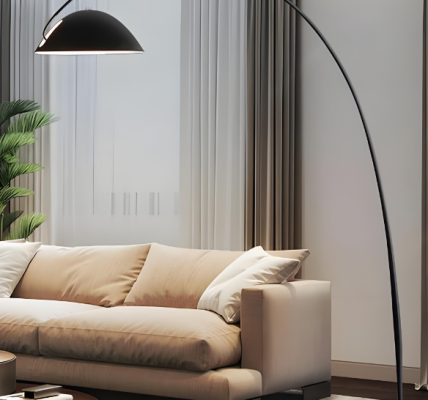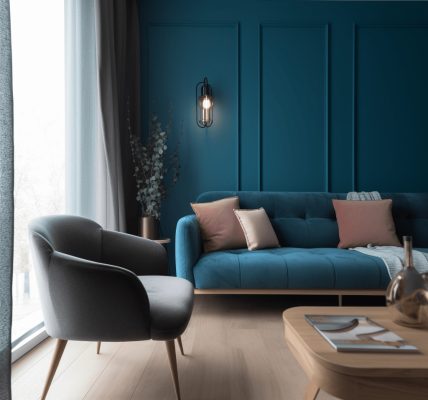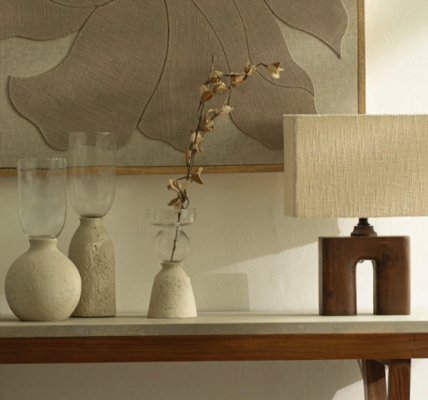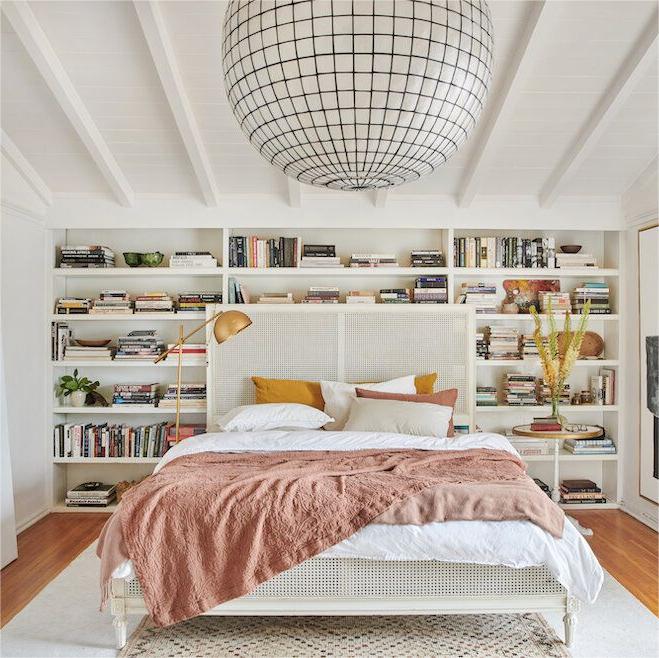Light Up Your Living Room: A Guide to Perfect Lighting for a Cozy and Inviting Space
Good lighting is essential in creating a comfortable and functional living room. It not only affects the overall ambiance of the space but also plays a crucial role in enhancing its functionality. Choosing the right lighting fixtures and bulbs can make a significant difference in how you experience and enjoy your living room.
Lighting has the power to transform a room, setting the mood and creating a welcoming atmosphere. Whether you are entertaining guests, relaxing with a book, or watching a movie, having the right lighting can greatly enhance your experience. It can make a small space feel larger, highlight architectural details, and even improve your mood.
When it comes to choosing lighting fixtures and bulbs for your living room, it is important to consider both style and functionality. The right lighting can complement your interior design while providing adequate illumination for various activities. By understanding the different types of lighting and how they serve different purposes, you can create a well-lit living room that meets all your needs.
Understanding the Different Types of Lighting
There are three main types of lighting that serve different purposes in a living room: ambient, task, and accent lighting.
Ambient lighting is the general illumination that provides overall brightness to a room. It is usually achieved through ceiling-mounted fixtures such as chandeliers or recessed lights. Ambient lighting creates a comfortable and inviting atmosphere, allowing you to navigate the space safely.
Task lighting is focused illumination that is used for specific activities such as reading, working on a laptop, or doing crafts. It is typically provided by table lamps, floor lamps, or desk lamps. Task lighting should be bright enough to prevent eye strain but not too harsh to create glare.
Accent lighting is used to highlight specific areas or objects in a room, such as artwork or architectural details. It adds depth and visual interest to the space. Accent lighting can be achieved through spotlights, track lighting, or wall sconces.
By incorporating all three types of lighting in your living room, you can create a well-balanced and functional space that meets all your lighting needs.
Choosing the Right Bulbs for Your Living Room
When it comes to choosing bulbs lucksnail for your living room, there are several options available, each with its own pros and cons.
Incandescent bulbs are the traditional choice and provide warm and soft light. However, they are not energy-efficient and have a shorter lifespan compared to other options.
Halogen bulbs are a more energy-efficient alternative to incandescent bulbs. They provide bright and crisp light, making them ideal for task lighting. However, they can get hot and may not be suitable for all fixtures.
Compact fluorescent bulbs (CFLs) are energy-efficient and have a longer lifespan compared to incandescent bulbs. They come in a variety of color temperatures, allowing you to choose between warm or cool light. However, they contain small amounts of mercury and require proper disposal.
LED bulbs are the most energy-efficient option available. They have a long lifespan and come in a range of color temperatures. LED bulbs are also dimmable, making them suitable for both ambient and task lighting. However, they can be more expensive upfront.
When choosing bulbs for your living room, consider factors such as brightness, color temperature, energy efficiency, and compatibility with your fixtures. It is also important to consider your personal preferences and the overall ambiance you want to create in your living room.
How to Layer Your Lighting for Maximum Comfort
Layering lighting is an effective technique that involves using multiple light sources at different levels to create a well-lit and visually appealing living room.
Start by considering the different activities that take place in your living room and the areas that need specific lighting. For example, you may need task lighting near a reading nook or a desk, while accent lighting can be used to highlight artwork or architectural features.
Next, choose a combination of ambient, task, and accent lighting fixtures that complement each other and your overall design aesthetic. For example, you can pair a chandelier or pendant light with table lamps or floor lamps to create a layered effect.
Consider the placement of your lighting fixtures to ensure even distribution of light throughout the room. Avoid placing fixtures too close together or too far apart, as this can create uneven lighting.
Finally, install dimmer switches for your ambient and task lighting fixtures. This will allow you to adjust the brightness according to your needs and create different moods in your living room.
By layering your lighting effectively, you can create a comfortable and visually appealing living room that meets all your lighting needs.
Tips for Creating a Cozy and Inviting Atmosphere
Lighting plays a crucial role in creating a cozy and inviting atmosphere in your living room. By using warm and soft light, you can make the space feel more intimate and comfortable.
Start by choosing bulbs with a warm color temperature, such as those labeled “soft white” or “warm white.” These bulbs emit a yellowish light that mimics the warmth of natural sunlight.
Consider using table lamps or floor lamps with fabric shades, as they diffuse the light and create a softer glow. Avoid using harsh overhead lighting, as it can create a cold and unwelcoming atmosphere.
You can also add candles or string lights to create a cozy ambiance. Place them strategically around the room to create pockets of soft light.
Additionally, consider using lighting fixtures with dimmers to adjust the brightness according to your mood. Lowering the lights in the evening can create a more relaxed and intimate atmosphere.
By using these tips, you can create a cozy and inviting living room that is perfect for relaxing and spending time with loved ones.
Highlighting Your Living Room’s Best Features

Lighting can be used to highlight the best features of your living room, such as artwork or architectural details. By directing light towards these features, you can draw attention to them and create a focal point in the room.
For artwork, consider using picture lights or track lighting to illuminate the pieces. These fixtures can be mounted on the wall or ceiling and provide focused illumination.
Architectural details such as exposed brick walls or decorative moldings can be highlighted using wall sconces or recessed lights. These fixtures can be installed strategically to create a dramatic effect.
When highlighting features in your living room, it is important to consider the placement and angle of the lighting fixtures. Experiment with different positions and angles to find the most flattering lighting for each feature.
By using lighting to showcase your living room’s best features, you can create a visually stunning space that reflects your personal style and taste.
Using Light to Define Different Areas of Your Living Room
Lighting can also be used to define different areas of your living room, creating distinct zones for different activities. This is especially useful in open-concept living spaces where there are no physical barriers between different areas.
For example, you can use pendant lights or a chandelier to define a dining area. Hang the fixture directly above the dining table to create a focused pool of light.
Similarly, you can use floor lamps or table lamps to define a reading nook or a cozy seating area. Place the lamps strategically to provide task lighting for reading or other activities.
By using lighting to define different areas, you can create a more organized and functional living room that meets all your needs.
Incorporating Natural Light into Your Living Room Design
Natural light is a valuable asset in any living room design. It not only provides illumination but also offers numerous benefits for your well-being.
Natural light has been shown to improve mood, increase productivity, and even regulate sleep patterns. It also enhances the visual appeal of a space, making it feel brighter and more spacious.
To incorporate natural light into your living room design, start by maximizing the amount of natural light that enters the room. Keep windows clean and free from obstructions such as heavy curtains or furniture.
Consider using sheer curtains or blinds that allow natural light to filter through while still providing privacy. You can also use mirrors strategically to reflect natural light and make the room feel brighter.
If your living room lacks natural light, consider installing skylights or light tubes to bring in more daylight. These can be a great way to introduce natural light into a space without sacrificing privacy.
By incorporating natural light into your living room design, you can create a bright and inviting space that promotes well-being and comfort.
Adding Decorative Lighting Fixtures for Style and Function
Decorative lighting fixtures can add style and function to your living room. They not only provide illumination but also serve as statement pieces that enhance the overall design aesthetic.
When choosing decorative lighting fixtures, consider the style and theme of your living room. For example, if you have a modern or minimalist design, choose fixtures with clean lines and simple shapes. If you have a traditional or vintage-inspired design, opt for fixtures with ornate details and intricate designs.
Consider the scale of the fixtures in relation to the size of your living room. Oversized fixtures can overwhelm a small space, while small fixtures may get lost in a large room.
Additionally, consider the functionality of the fixtures. For example, pendant lights with adjustable heights can be used to provide task lighting over a dining table or kitchen island.
By choosing decorative lighting fixtures that complement your living room’s design, you can add style and function to the space.
Maintenance and Upkeep of Your Living Room Lighting System
Maintaining and updating your living room lighting system is essential to ensure its optimal performance and longevity.
Regularly clean your lighting fixtures to remove dust and dirt that can accumulate over time. Use a soft cloth or a duster to gently wipe the surfaces of the fixtures. Avoid using harsh chemicals or abrasive materials that can damage the finish.
Replace burnt-out bulbs promptly to ensure adequate illumination in your living room. Keep spare bulbs on hand so that you can easily replace them when needed.
Consider upgrading to energy-efficient bulbs such as LED bulbs, which have a longer lifespan and consume less energy. This can help reduce your energy consumption and lower your electricity bills.
If you are not confident in handling electrical work, consult a professional electrician for any repairs or installations. They can ensure that your lighting system is safe and up to code.
By maintaining and updating your living room lighting system, you can ensure that it continues to provide optimal illumination and enhance the overall ambiance of your space.
Good lighting is essential in creating a comfortable, functional, and visually appealing living room. By understanding the different types of lighting and how they serve different purposes, you can create a well-lit space that meets all your needs.
Choosing the right bulbs for your living room is also important. Consider factors such as brightness, color temperature, energy efficiency, and compatibility with your fixtures.
Layering lighting is an effective technique that involves using multiple light sources at different levels to create a well-balanced and visually appealing living room. By using warm and soft light, you can create a cozy and inviting atmosphere.
Lighting can also be used to highlight the best features of your living room, define different areas, incorporate natural light, add style and function, and create distinct zones for different activities.
Maintaining and updating your living room lighting system is essential to ensure its optimal performance and longevity. Regularly clean your fixtures, replace burnt-out bulbs promptly, consider upgrading to energy-efficient options, and consult a professional electrician for any repairs or installations.
In conclusion, good lighting is not only about functionality but also about creating a comfortable and visually appealing living room. By understanding the different types of lighting, choosing the right bulbs, layering lighting effectively, and incorporating natural light, you can create a well-lit space that meets all your needs. Additionally, by using lighting to highlight features, define areas, and add style and function, you can enhance the overall ambiance of your living room. Regular maintenance and updates are also important to ensure the optimal performance and longevity of your lighting system. So, take the time to carefully consider your lighting choices and create a living room that is both functional and beautiful.
